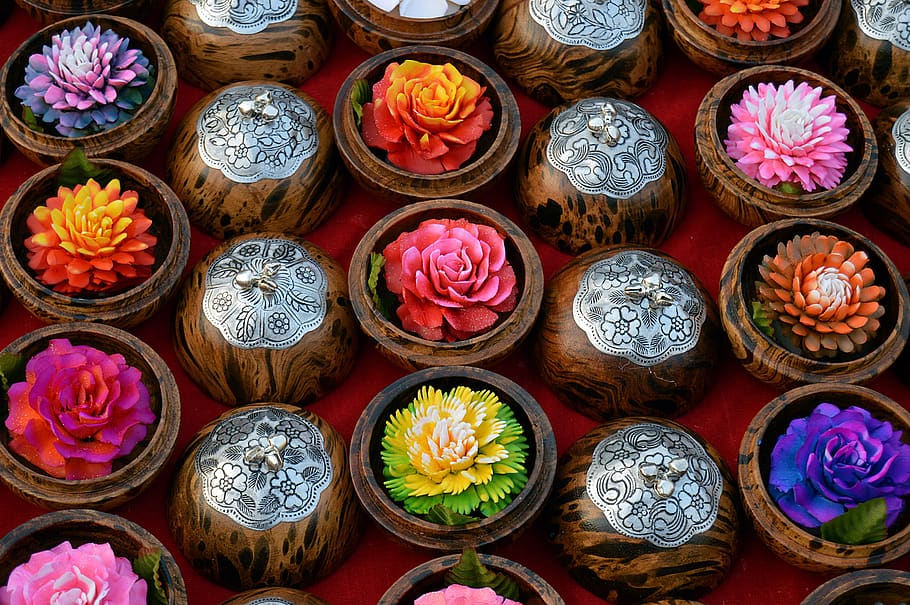These soaps keep their smell for a long time, hence every time the box is opened, the sweet fragrance fills the room.

Thai Soap Carving originally started with fruit and vegetable carvings. The skill of carving fruit and vegetables into stunning shapes started around 700 years back, in Sukothai. Sukothai was the original capital Thailand, located in what is now considered to be the northern sector of central Thailand. It was the capital between 1240 and 1350. During preparations for a major Thai festival called Loi Kratong, a servant of the King called Nang Noppamart was thinking about how she could improve on her Kratong and make it more beautiful, hoping to please his royal majesty. She chose one of her favorite flowers and used it as a base for her carving. She then proceeded to carve a bird, which was set in a position pointing its head towards the hand-carved flower. The tradition of Loi Kratong can still be witnessed today and is and Sukothai is (not surprisingly) among the best places to experience it.

Since the revolution that occurred in 1932, the art of fruit and vegetable carving faded in popularity. Many previous skilled carvers became concerned that the art was disappearing completely and so set up a new course to train Thai people in the hope of preserving the art for everyone to enjoy. Nowadays it is taught to children of 11 years and older, starting in primary schools and continuing through secondary school. Some students even continue to choose it as a specialist optional subject for university. The skill has been preserved, but now with a relatively modern twist of Soap Carving, which allows the carving skills of talented craftsmen to last longer and be enjoyed for generations.

More and more people across the world are slowly discovering (often with disbelief) the amazing beauty of this Thai art form, all thanks to the original inspiration from Nang Noppamart and the courses created to preserve the skill. People are now using these for unique gifts, souvenirs and wedding favors across the globe … and in turn, are also helping to make sure the craft lives on for generations to come.
According to discover.hubpages.com













